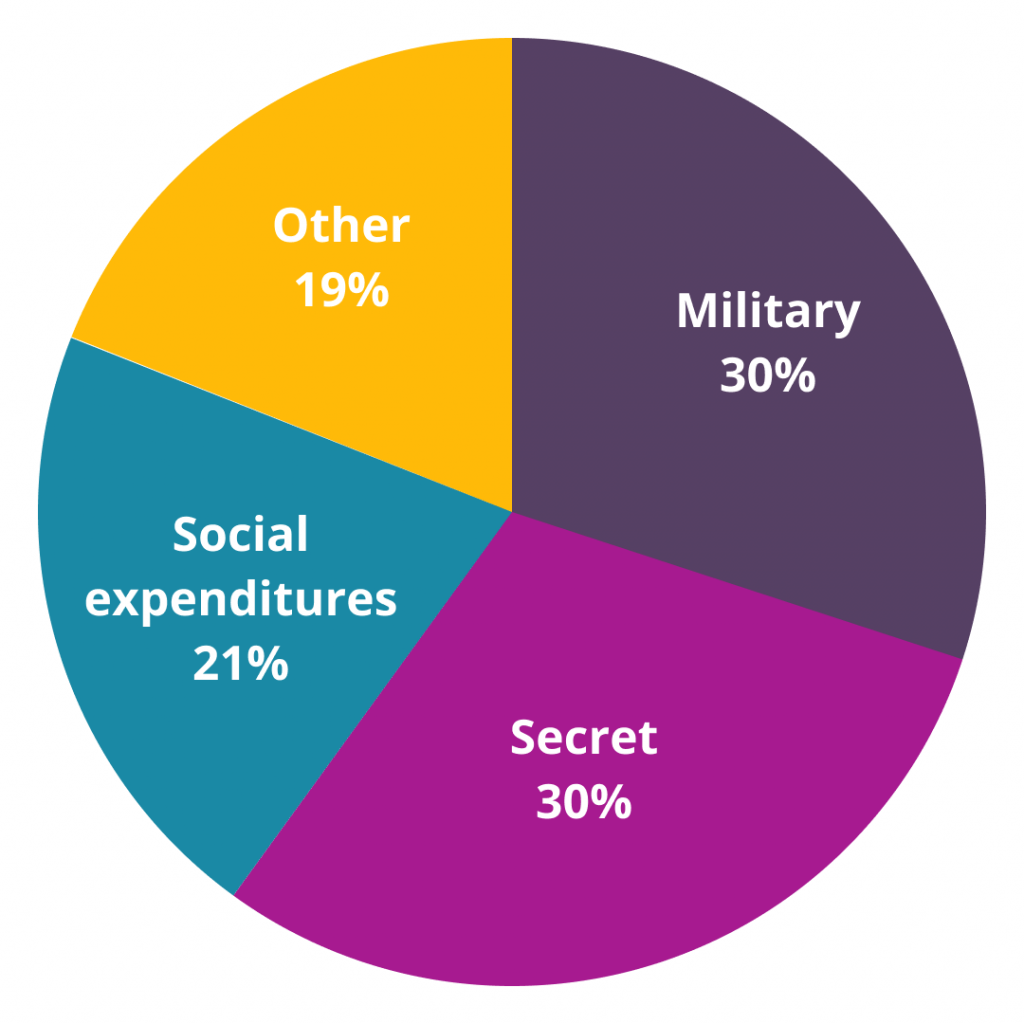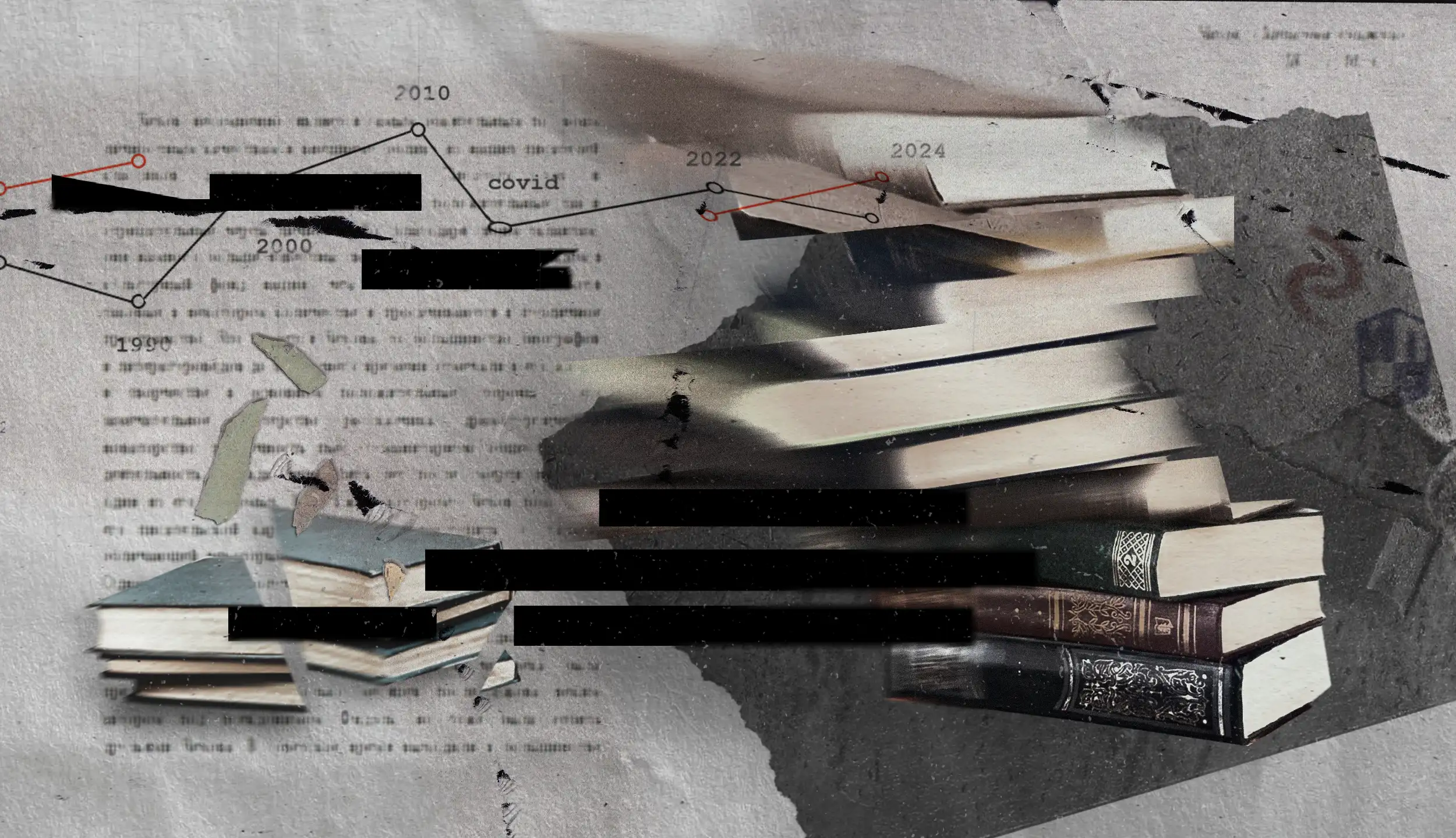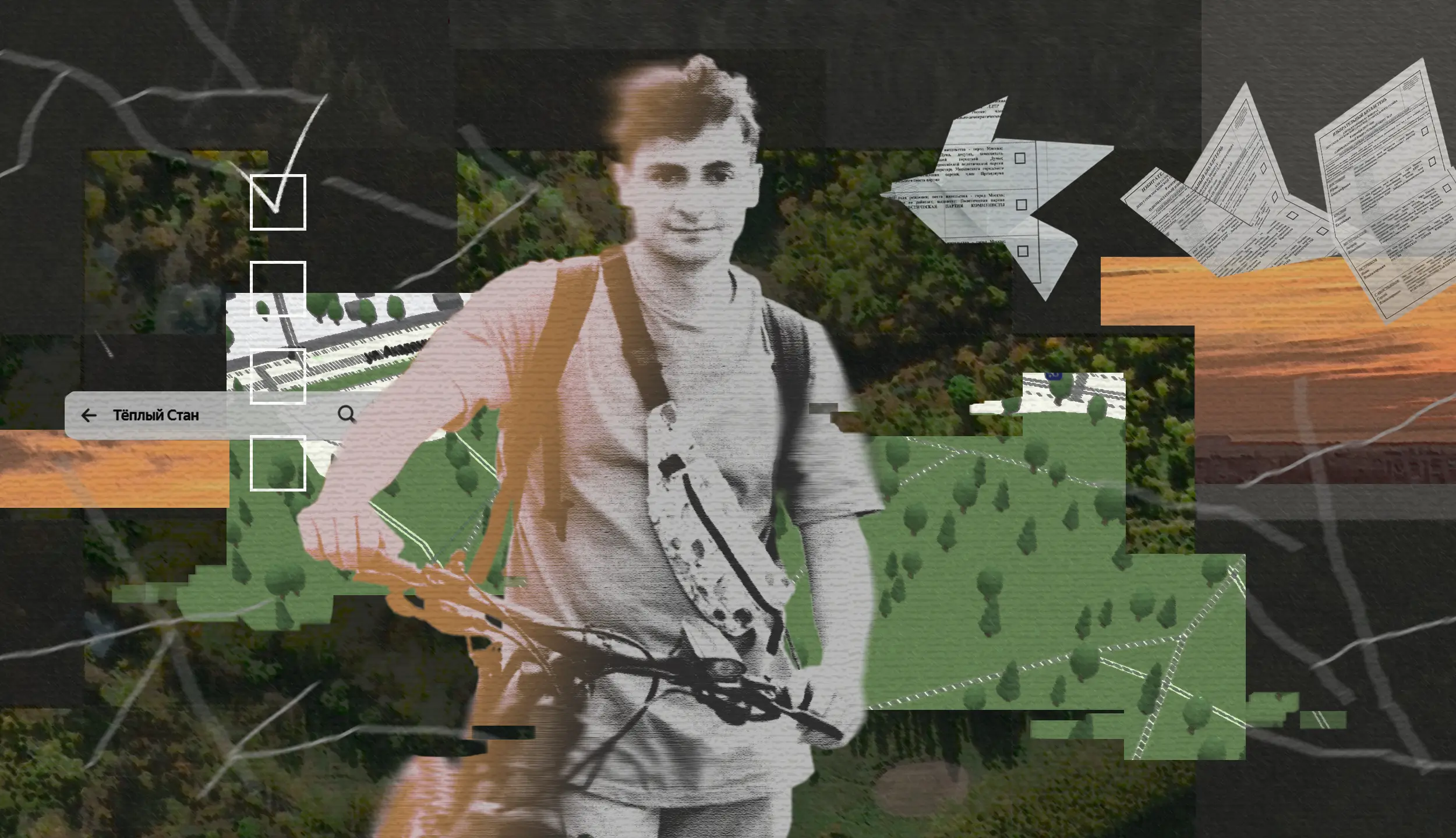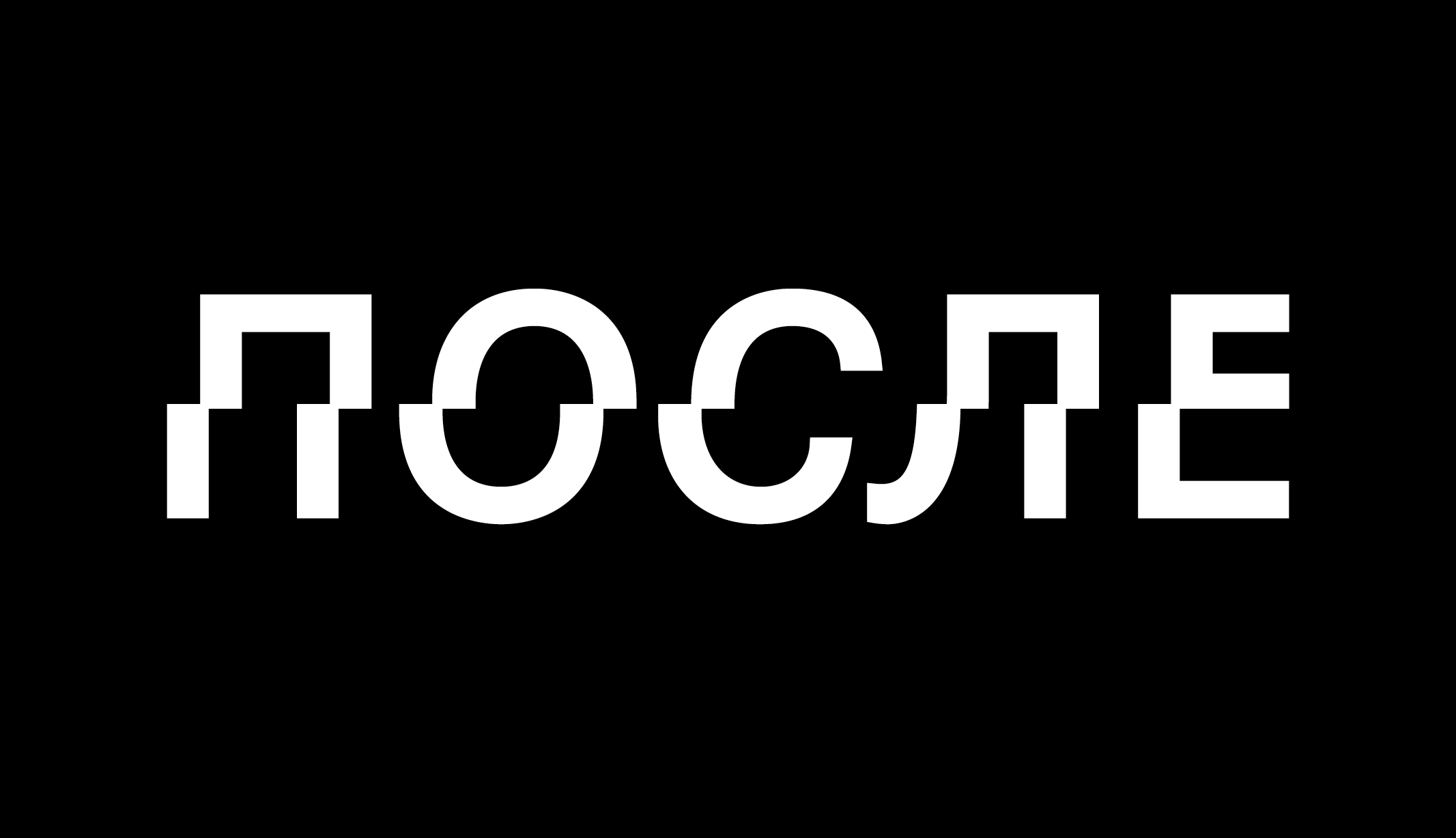The overall economic position
The Russian government has submitted the draft federal budget for the next three years to the State Duma. For the first time in modern history, the country is set to spend 6 percent of gross domestic product (GDP) on the military, and defense spending will exceed social spending. The budget envisages that revenue will grow by more than a third in 2024, reaching 35 trillion rubles ($349 billion). Of that, 11.5 trillion rubles is expected to come from the oil and gas sector. Planned expenditure is 36.6 trillion rubles (a 26.2 percent rise on this year). This means that the budget deficit next year, at least according to the government’s plans, should significantly decrease—from a planned 2 percent of GDP in 2023 to 0.8 percent of GDP in 2024.
Earlier predictions from the end of 2022 show how the longer than expected war with Ukraine has changed government priorities, and required increased expenditure on military issues.

The Cabinet of Ministers’ budget plans, naturally, saw a large increase in military spending up to 10.8 trillion rubles in 2024, which, as mentioned, will account for 6% of GDP. This year it was 3.9%. The “National Defense” expenditures will increase from 21.2% to 29.4% of all treasury expenses in 2024. At the same time, the share of social spending fell to 21.1% (to the level of 2011). As for the growth of Russian military spending, it is worth remembering that back in 2022 it accounted for 4.06% of GDP. For comparison, that year, the defense spending in the United States accounted for 3.45% of GDP, China – 1.6% of GDP. Ukraine was the only exception. For obvious reasons, it spent 33.55% of its GDP on defense.

Government budget optimism
The lower house of parliament has already started consideration of the budget in committees and commissions. Further, the State Duma will discuss it in three separate readings and submit it to the Federation Council, which will assess the document adopted by the Duma. Sometime in early December, as it was last year, the budget will be signed by President Vladimir Putin.
There is no doubt that deputies of both houses will also approve the government’s proposal to almost double the classified budget lines: from 6.5 trillion rubles this year to 11.1 trillion next year, in addition to the increasing military spending. This will account for 30% (!) of all expenditure, – – due to the secret articles, it is not known exactly how much money will go to continue the aggression against Ukraine.
In 2024, 7.71 trillion rubles are intended for social expenditure. Typically in Russia, this includes spending on pensions, social security and services for Russians, healthcare and medicine, education, family and childhood protection, culture, etc. The state has been focusing on families with children in the last few years. Since January of this year, unified family benefits for the most vulnerable groups of the population have been introduced. Payments are now provided for children under 17 years of age.
When covering the draft budget, state media emphasize the increase in social spending in nominal terms that will amount to 1 trillion rubles, but it is striking that only 21.1% of all the spending is allocated for these purposes. This is the lowest figure in over 10 years. Between 2015 and 2021, the average share of social expenditures in the federal budget has been fluctuating at 27-30%.
In 2020, (an exceptional year) this figure accounted for 30.6% of all federal budget expenditures. Extra payments were due to the coronavirus pandemic. By 2022, almost all of these extra payments were canceled, but new expenditures appeared concerning the mobilized citizens and their families. Given the constant loss of lives and severe injuries of Russians in the war with Ukraine, these expenses are not going to decrease in the coming year.
The Zashchitnik Otechestva Foundation, founded in the spring of 2023, will work with demobilized, disabled war veterans and family members of the deceased. This structure is headed by Anna Tsivileva, who, according to the Agenstvo media publication, is Vladimir Putin’s cousin. However, their relationship has not been officially confirmed.
Initially, 1.3 billion rubles were allocated for the foundation’s activities, which was only enough to overcome organizational challenges and pay for staff. In September, the government issued a grant to the fund of 5 billion rubles for its statutory purposes. It is likely that similar figures will emerge in the final version of the next year’s budget.
It is known for sure that this structure will be financed through spending on non-profit organisations (NPOs). As Olga Zanko, deputy chairman of the Duma Committee on Civil Society reported, non-profit organizations will receive 337.6 billion rubles from the treasury next year, however, the money will be include the funds spent on Anna Tsivileva’s Foundation. This means cutting the budgets of other non-profit structures that operate on budget injections.
Write two and carry three over
The draft budget contains many other articles that can only formally be classified as social spending, but in fact, they are directly related to the war. For example, funds for the “Reconstruction and socio-economic development of the Donetsk People’s Republic (DPR), Luhansk People’s Republic (LPR), Zaporizhzhia, and Kherson regions” program amount to 37.5 billion rubles. Additionally, there are also expenses for salaries of state employees who work in the territories occupied by Russia. This makes additional 32 billion rubles.
Such expenditure lines have already been defined as “quasi-social”. They include not only the spending on war in Ukraine. Commenting on the draft budget for Posle Media, Igor Lipsits, Doctor of Economic Sciences, highlighted the line of housing and communal services, which directly affects the quality of life of all living in Russia. In 2024, it is planned to reduce spending on housing and communal services by 5% (unadjusted for inflation).
“In 2025, the collapse is expected to be quite terrifying, even scary. Housing and communal services spending in 2025 compared to 2024 will be only 56%, in other words, it will be cut by 44%. In the two next years, housing and communal services spending in Russia will be halved. This is a frightening picture,” Lipsitz believes.
According to him, the deterioration of utility networks several years ago was about 60%. About 30% of heating networks, 44% of water supply systems, and 46% of sewerage networks require replacement. Every fifth elevator in an urbanized country is in disrepair. Approximately 5% of utility networks need to be repaired annually, however, only 2% are being updated. Igor Lipsits believes this will affect the quality of life of Russian citizens since it is obvious that heating networks will break, and cities will be left without water, public heating, sewerage, or electricity. More than 7,000 incidents of this type occur in Russia every year. With a reduction in housing and communal services spending, we will face tens of thousands of similar incidents, which will be a serious blow to the social conditions of life.
What will be left for social expenditures?
The “Social Policy” section itself, will see a reduction in funding in some articles next year, although overall allocations will increase. For instance, 18 billion rubles are expected to be reduced for payments to the unemployed due to an improved situation on the labor market. Due to the deteriorating demographic situation, the allocation of funds that parents receive on the birth of their third child and subsequent children will be reduced by almost 12 billion rubles. Regional social additional benefits to pensioners will be reduced by 5 billion rubles.
At the same time, just a few days after the draft budget had been submitted to the Russian parliament, Finance Minister Anton Siluanov made a special statement about the upcoming indexation of pensions. He emphasized that the indexation will be at the expected inflation rate of 7.5%. The average pension of a Russian citizen will be 23,244 rubles. In total, 10 trillion rubles will be spent on pensioners next year.
For this category of Russians, medical care is critical. The Cabinet of Ministers proposes increasing the general healthcare spending by only 3% in 2024 and 1% in 2025. The spending under this article will nominally increase from the current 1.57 trillion rubles to 1.62 trillion in 2024 and 1.63 trillion in 2025.
Even setting aside inflation, which will inevitably eat up this increase, it should be noted that expenses under the national Healthcare project will still be reduced by 31.4 billion rubles (i.e. almost 10%) next year. There will be a shortage of funds for the following federal programs: Fighting Oncological Diseases, Fighting Cardiovascular Diseases, Development of Children’s Health Care, and Modernization of Primary Health Care in the Russian Federation.
Therefore, not only funding will be slashed to build the modern infrastructure for providing medical care to children, but also to modernize regional clinics, to create new medical and obstetric stations, and day patient facilities, and to attract a skilled workforce; even though the national Healthcare project includes nine target indicators, including reducing infant mortality and losses from cancer. Target indicators are an integral part of any national project passport design, that is approved by the Presidential Council of the Russian Federation for Strategic Development. The public officials cannot abandon these targets fixed for the implementation of the national project.
Moreover, the money allocated for medicine is not always disbursed. This summer, Health Minister Mikhail Murashko reported on saving 2.5 billion rubles during the implementation of his department’s primary care upgrade program. The funds’ retention was not due to hospitals and clinics built or renovated, equipment purchased, and medical facilities staffed, but to the fact that a number of federal subjects simply could not use the allocated money.
Nikolai Kulbaka, analyst, Ph.D. in Economic Sciences, explains the reduction in finances for healthcare development by the officials treating this issue quite banausically (basically??).
“First, they believe, we have spent enough on fighting Covid-19. There is no need to be spending that much. Second, the population of Russia is not growing, but rather decreasing. This fact also prevents officials from significantly increasing these expenses.”
Third, there are costs that people don’t really understand. If these funds were significantly increased, it would help to build infrastructure and equip hospitals, but it would be hardly noticeable. But if the same amount of money were given instead in the form of targeted assistance, eg through pensions, then it would be perceived much more favorably. I think there is cynical and pragmatic calculation behind it,” the analyst notes.
Putin’s “giveaways” from the budget
Let us not forget about the next year’s “elections” of Vladimir Putin as President of the Russian Federation. In this regard, the majority of experts project “giveaways” from the budget in the form of some kind of social payments. The Kremlin has got enough reserves to carry out these “unexpected” activities. Every year the country’s budget allocates funds (more than 2 trillion rubles) to implement the president’s initiatives following his annual Address to the Federal Assembly.
Nikolai Kulbaka is also confident that such “giveaway surprises” are likely to take place next year. In his opinion, short-term payments will most likely be addressed to families with children, which will continue the trend of expanding various payments to this category. The high probability of such a development of events is aligned with the draft budget for next year to have a sharp increase in income and expenses. The government is not planning anything like this either in 2025 or 2026.
“The largest reduction in spending will probably be in 2025 as the budget there will be even smaller in nominal terms than in 2024. This means that a massive injection of money is being planned specifically for next year. This, of course, is due not only to military actions but also to coming elections,” Kulbaka emphasized.
Saving at the expense of schools and culture
Government spending on education in the coming years does not look bright for teachers. The spending under this article will increase by 5% in 2024, but in 2025 will decrease by 15%. In numbers, the situation looks as follows: 1.46 trillion rubles in 2023, 1.55 trillion rubles in 2024, 1.31 trillion rubles in 2025, and 1.41 trillion rubles in 2026. Over the next two years, the decline will be 10%, unadjusted for inflation. The implications are obvious: teachers will not be entitled to salary increases; schools will not get modernization or repairs, and children will not get warm indoor WCs instead of those outdoors, as was the case in 2019.
Despite the massive emigration of IT specialists, the budget will see a reduction in the spending on teaching modern programming languages to high school students. By the beginning of the school year, more than 400 thousand schoolchildren applied for these courses. The program provides 140 thousand places for the whole of Russia, and if its funding is reduced in the 2024 budget, then half of the children will not be able to complete these courses. Even Alexander Khinshtein, one of the most well-known State Duma deputies from United Russia, expressed his indignation about it.
The reduction in spending on culture and cinema over two years will be 15%, unadjusted for inflation. For instance, support for cinematography from the Ministry of Culture (including the Cinema Fund) will amount to 16.2 billion rubles in 2024, and only 12.6 billion in 2025.
“Spending on culture and cinema is reduced by a third, adjusting inflation. Where will you end up with the country’s cultural spending reduced by 1/3? I think that some large federal theaters will survive. The rest will run on a shoestring budget, and it is quite difficult to envision their future,” added Igor Lipsits.
Therefore, Russia’s draft budget clearly demonstrates the Kremlin’s intention to save on everything except for military spending, despite the 26.2% rise in expenditure, mentioned at the beginning.







